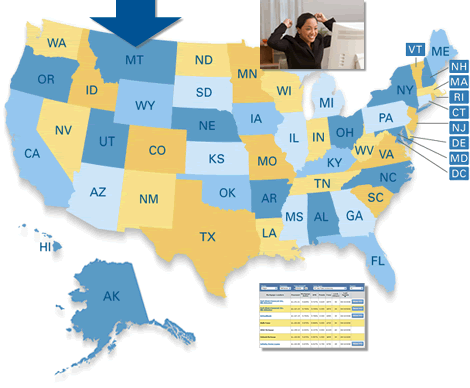Mortgage Advice
Mortgages
Understanding Mortgages: What is Private Mortgage Insurance?
by Amy Lillard
(7/5/2012) In the midst of one of the most uncertain real estate markets in history, it’s more important than ever to be informed. In a continuing series, we take a look at some of the most pressing questions about mortgages, refinancing, home equity, and other real estate options available to you.
There can be a lot of surprises when you obtain a mortgage, particularly if you’re a first-time buyer. When borrowers look at their new mortgage paperwork, it can often be surprising to find an unanticipated cost for something called “private mortgage insurance” (PMI).
Typically, if your down payment on your new home is less than 20 percent of the sale price, lenders will require you purchase PMI. The primary purpose of PMI is the protect your lender against default - they view purchases as riskier if the down payments are lower. PMI can be necessary no matter the type of loan you obtain.
Costs associated with PMI will vary depending on the size of your loan and your down payment. Usually PMI will cost up to 1 percent of the total loan. On a $200,000 loan with a $10,000 down payment, PMI costs could total $1,000 a year (spread out in monthly increments). While these premiums used to be tax-deductible, this is unfortunately no longer the case.
Borrowers are required to keep PMI until they have paid 20 percent of the home’s sale price. The Homeowners Protection Act of 1998 requires lenders to tell borrowers how long this will take at closing. They must then automatically cancel PMI when this is met.
There are situations where PMI is required for even longer. For borrowers considered “high-risk” by lenders, which could mean lower credit scores and credit issues or higher debt-to-income ratios, lenders could require PMI until 50 percent of the home’s sale price has been paid. Also, some government loans require PMI (in this case, called public mortgage insurance) throughout the entire life of a loan.
Options exist to avoid PMI, even if borrowers cannot put down 20 percent. Some lenders will waive PMI requirements if the borrower takes a higher interest rate on the loan. There’s also the “80-10-10” option. Borrowers will put down 10 percent of the loan, then receive one loan for 80 percent of the mortgage, and another loan for 10 percent of the mortgage (at a higher interest rate).
While PMI may be an additional cost to consider each month, it is one way that people can afford the homes they desire, even if they don’t have the savings for a larger down payment.
For additional reading:
Benefits of Mortgage Insurance: http://www.ehow.com/info_7884216_benefits-mortgage-insurance.htmlRemoving Private Mortgage Insurance: http://www.bankrate.com/finance/mortgages/removing-private-mortgage-insurance.aspx Refinance at Today's Low Rates!
Follow the link to continue reading the related articles.
Understanding Mortgages: What is Escrow?
Understanding Mortgages: Mortgage Terms
Understanding Mortgages: Types of Mortgages
Sun sets on mortgage insurance deduction
Fannie Mae & Jumbo Mortgage Rates
Just One Click! = Current Rate Chart


